Whether you like them or your pizza or simply want to add them to your sandwiches, mushrooms bring a matchless touch of flavor to all foods. With so many uses and types, the idea of growing mushrooms at home appeals to many.
In this guide, we will talk about how to grow mushroom mycelium in a greenhouse, even if you have no knowledge of kitchen gardening whatsoever. With a little practice and a whole lot of tips that we share below, you will be a pro at growing mushrooms in a greenhouse in no time.
Growing Mushrooms in a Greenhouse: The Basics
Mushrooms are typically grown in trays that are up to two feet long and 12 inches deep. If you have the knack for a little DIY-ing, you can make this tray yourself. Otherwise, you can buy one.
Before we go into detail about the mushroom growing process, here is a look at some basics to know:
Growing Medium
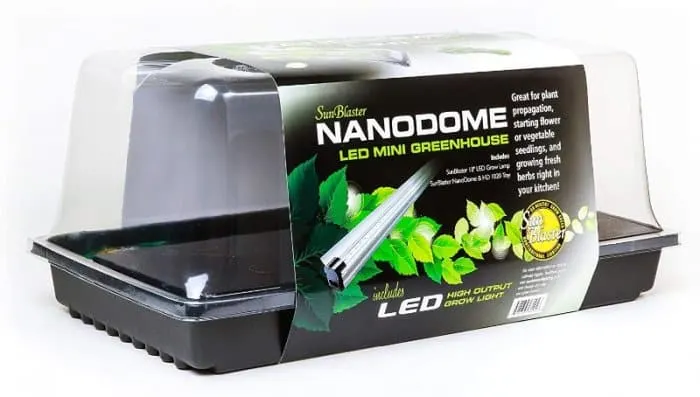
While most other house plants prefer soil, mushrooms need an unusual growing medium. The best growth medium for mushrooms is a mixture of organic substances, nitrogen, and sugars.
For instance, horse manure mixed with straw proves to be a remarkable growth medium for mushrooms since it is rich in nutrients and has a lot of moisture.
Alternatively, you can use compost made using water, peat moss, corn hay, and straw.
If you intend on growing a large number of mushrooms, you should get an indoor mushroom greenhouse kit as they already have the spawn and the growing medium.
A mushroom greenhouse kit, such as the SunBlaster LED Mini Kit greenhouse, makes the process easier. It is ideal for large-scale mushroom growing. Or, you can use an All-in-One Mushroom Grow Bag instead of doing everything from scratch.
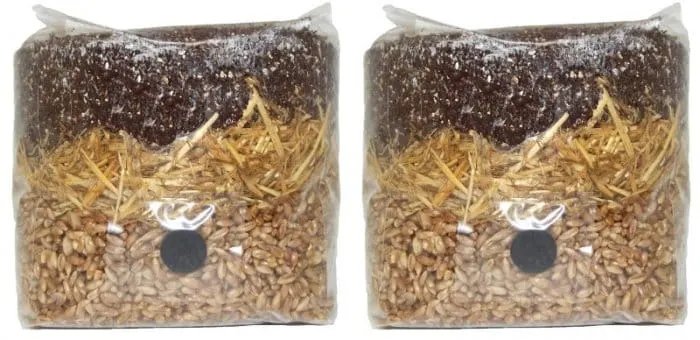
Spawn
The spawn refers to a material that you inoculate with the mycelium. You will use it for transferring mycelium to a substance that facilitates the development of mushrooms. The spawn should match the substrate.
For example, if you are growing mushrooms on wooden logs, the spawn should also be wood-based, such as sawdust.
Substrate
The substrate is the food source for your mushrooms and helps form the mycelium or the fungi’s structure. Straw is commonly used as a substrate for growing oyster mushrooms.
Alternatively, you can use coffee grounds, a sugarcane residue, cotton flakes, sawdust, cardboard, or any agricultural byproduct.
The substrate gives a hydrating source of food to the mushrooms for growing.
Benefits of Growing Mushrooms at Home
Sure enough, the major reason for learning how to grow mushrooms in a greenhouse would be that you like eating them.
However, there are many other benefits of growing these culinary must-haves in an indoor mushroom greenhouse.
- Wild mushrooms can be poisonous and may have toxins detrimental to your health. On the other hand, when you grow mushrooms at home, you are certain that they will be safe for consumption.
- With mushrooms at home, you will not have to wait for a certain season to enjoy the variety you like.
- If you do not like buying mushrooms for the store or want to save money, growing them at home is an excellent alternative.
- Since mushrooms decompose organic substances, you can put the used substrate in your plants.
Materials Required for Growing Mushrooms in a Greenhouse
You can grow mushrooms in greenhouses since they do not need sunlight and prefer dark and cool places. Here are the best greenhouse accessories and materials required for growing mushrooms in a greenhouse.
A Greenhouse
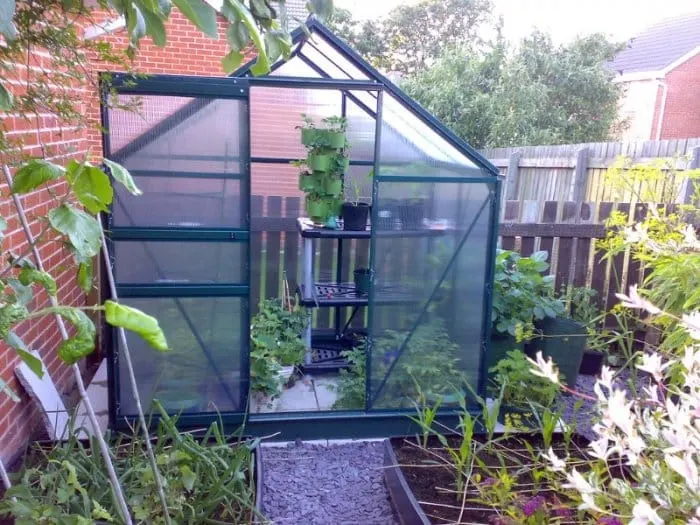
If you get a four-tier greenhouse, it will be a great start to your mushroom growing hobby. A greenhouse is required to keep a controlled environment for growing mushrooms.
Since you can easily buy an indoor mushroom greenhouse, you do not necessarily need a lot of space in your yard or anywhere outside. An indoor mushroom greenhouse would be portable, allowing you to keep it anywhere you want.
Most greenhouses are also automated, saving you the time and effort of adjusting the environment every day. Here is our guide on the best greenhouses to buy.
Humidifier
A humidifier will control the level of humidity in the greenhouse. If you do not want to buy one, you can loosen the greenhouse plastic sheet cover a few times a day, letting fresh air in.
Meanwhile, if you use a humidifier, make sure you wash it occasionally to prevent the growth of impurities in the greenhouse.
Hygrometer
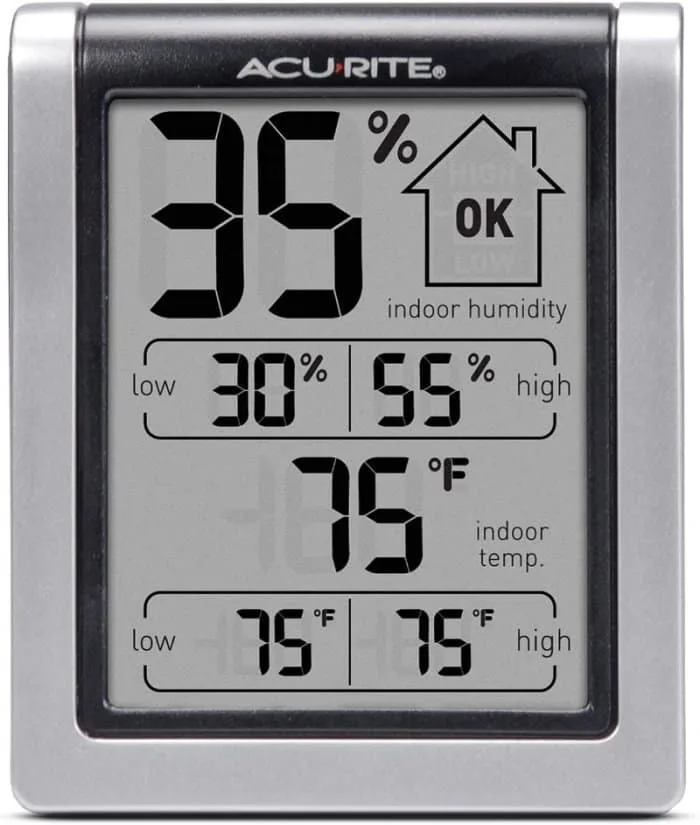
If your greenhouse has a humidifier, it might create a lot of moisture. In that case, you can invest in a moisture-control device, such as this Digital Hygrometer & Indoor Thermometer, which maintains the right humidity and temperature levels in the greenhouse.
Since it has multiple placement options, you can keep the hygrometer on a flat surface or hang it using the keyhole hanger.
Grow Lights
Mushrooms do not need excessive sunlight, but they definitely need unique light conditions. To create these conditions in a greenhouse, you can buy this GE Lighting 93101232 LED Grow Light.
Since it comes with easy controls, you can ensure that the greenhouse is not overheated.
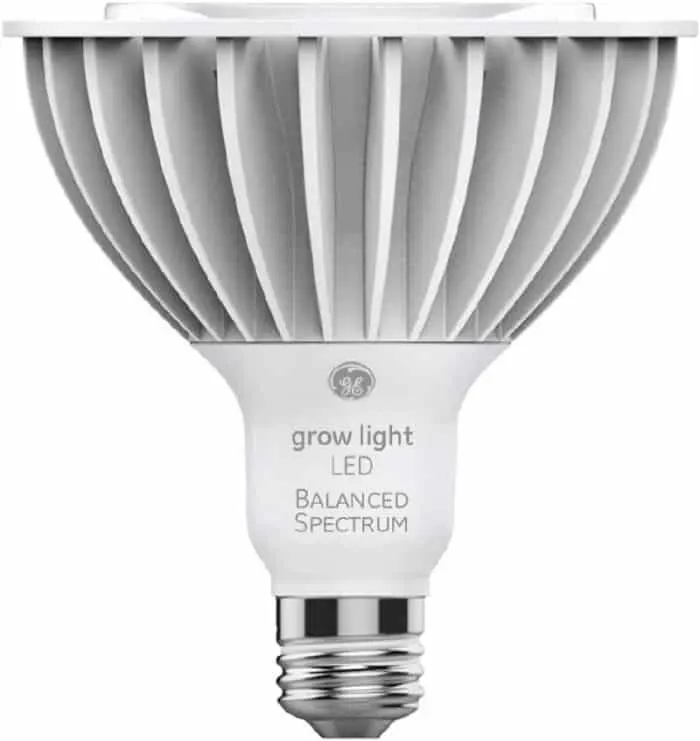
Filter Patch Bags
When you are using an indoor mushroom greenhouse, you need to make sure the surfaces are disinfected. Otherwise, impurities might grow in the substrate, contaminating your media.
Filter patch bags help sterilize the substrate, keeping it safe from impurities. Without using these bags, you will have a hard time managing a medium with abundant nutrients.
Filter patch bags can bear atmospheric steaming and sanitizing to sterilize the media substantially.
Steamer
A steamer will sterilize the greenhouse, keeping the environment optimal for growing mushrooms. Steamers tend to be very affordable.
They sterilize the interior of a greenhouse by using atmospheric steam. If you do not have a steamer, you can also use a pressure cooker to sterilize jars and other items.
Thermal Mats
Thermal mats also help in keeping a constant and controlled temperature in the greenhouse. Since they are reusable, thermal mats are economical. If you are growing mushrooms in winter or colder days, these mats will ensure you get a significant harvest.
How to Grow Mushrooms in a Greenhouse?
Now that you know the basics of growing mushrooms in a greenhouse let us discuss the step-by-step guide.
Step 1: Prepare the Spawn
The mushroom spawn is similar to seedlings for plants. You can start growing mushrooms once you have the spawn. The two ways to get spawns are:
- Getting them from spores
- Buying a mini mushroom greenhouse kit
A mushroom kit can cost you around $20 to $30, depending on the one you are buying. For instance, the Back to the Roots Organic Mini Mushroom Grow Kit only costs $15.99 and grows oyster mushrooms in just ten days.
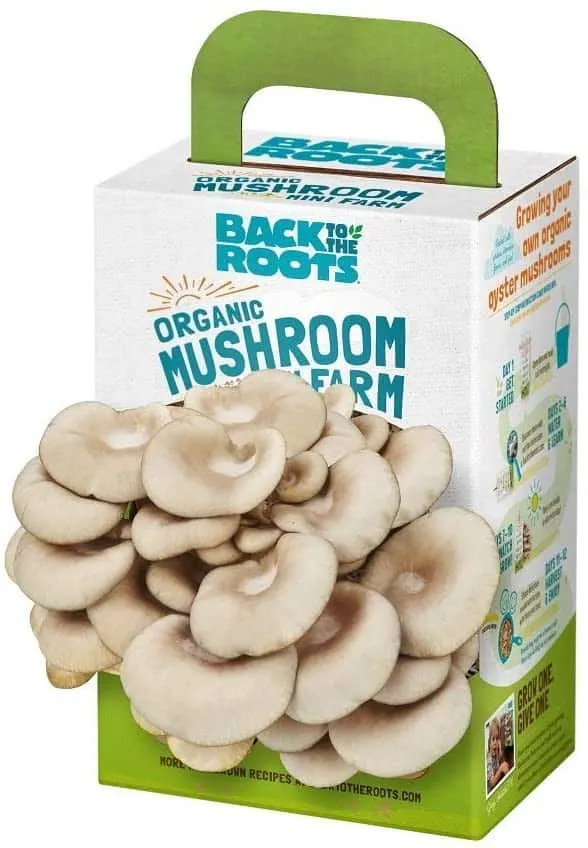
If you are a beginner, a DIY mushroom greenhouse kit will be perfect for you. While some kits only have the spawn, others also contain growth media in them.
Alternatively, you can get spawn from the spores. Here is what you need for the process:
- Agar
- Mini grow media
- Mushroom spores
- Tray
- Petri dish
Start by preparing the petri dish with agar. It comes in the form of a powder that you have to mix in water to create a liquid medium. Let it set, and then hold the mushroom over the petri dish. Tapping it will release the spores onto the media.
Put the Petri dish’s cover on it and let it sit at 70°f (21°c) until you start seeing the mycelia – they are whitish strands – on the Petri dish. These strands are your spawn.
To pick up the mycelia from the media, make sure you are using a sterilized blade or knife. Add the mini growth media to the tray and cut the strands from the petri dish.
Put them into the tray and cover the tray with a newspaper. Doing so will retain moisture.
Finally, put the grow media at 60°-70°F in a humid room and leave it for a week or two. After that, you will see growth on the tray, which you can use as your spawn.
Step 2: Make Growth Media
As discussed earlier, the growth media preferred by the mushrooms depends on their type. For example, oyster mushrooms thrive in a medium made of coffee grounds and straw.
Meanwhile, white button mushrooms like media that have composted manure in them.
Here is how to make a growth medium with a straw since it is preferred by almost all mushroom varieties:
- Cut the straw into small pieces.
- Mix two to three parts calcium carbonate, five parts urea, two parts magnesium sulfate, and 100 parts straw.
- Soak this mixture.
- Let the water drain and place the mixture in a jar or a tray. Make sure it is six inches deep.
- Steam the growth media to sterilize it. If you do not have a steamer, you can sterilize the mixture by putting it in a jar and then placing the jar in a pressure cooker. Or, you can put the tray on boiling water and let it stay for two hours.
Step 3: Mix Growth Medium with Spawn
After the growth medium has cooled, mix it with the spawn on the tray. The mixture should be one-quart spawn per 15 feet of the medium.
Before you mix them, make sure you have sterilized the growth medium and the tray. Finally, the tray is ready to be taken to the greenhouse.
Set the temperature at 55°-60°F for the best mushroom growth.
Step 4: Care
After leaving the mushrooms in the greenhouse, wait for them to grow. During this time, you can care for them in different ways:
- Water the medium two times a day. Make sure it is moist and well-drained.
- The humidity in the medium should be at 60%. You can use a humidifier for this or spray droplets of water using a spray bottle.
- Do not put the mushrooms under direct sunlight, as it will hinder their growth.
Since mushrooms lack chlorophyll, they do not get their nutrients from the Sun. Therefore, the greenhouse should be dark when the mushrooms are spawning.
If you have a portable greenhouse, keep it away from any window that lets direct sunlight in.
If mushrooms grow under sunlight, they grow brown or dark brown caps. Instead, you can give them indirect sunlight or grow light from an artificial source.
Step 5: Harvest
Depending on the type of mushroom you are growing, the growth period will differ. Some varieties, such as shiitake mushrooms, oyster mushrooms, and white button mushrooms, take two months to be ready for harvesting.
Some others, such as morel mushrooms, can take years.
Harvesting mushrooms is not the same as other plants, as you should not pluck them. Instead, cut the steam using a knife.
Make sure you are only harvesting when the cap is no longer attached to the stream.
After harvesting your first batch, keep misting the compost two times a day. Doing so will lead to new growth in a while.
Types of Mushrooms To Grow
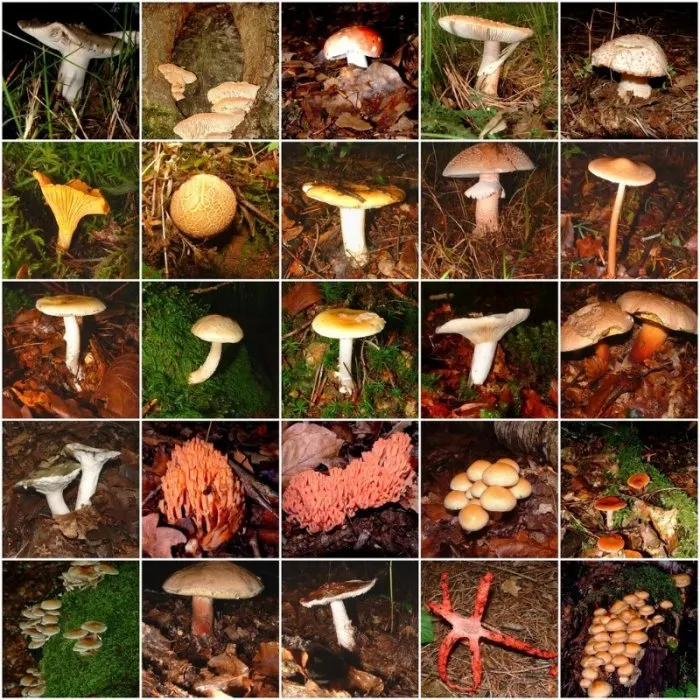
There are a number of edible mushrooms that you can grow at home. Some of them include:
- Lion’s mane mushrooms
- Champignon mushrooms
- White button mushrooms
- Culinary mushrooms
- Shiitake mushrooms
- Portobello mushrooms
- Oyster mushrooms
The easiest varieties to grow at home are shiitake, white button, and oyster mushrooms. The process is pretty much the same for each variety, except that you may have to use different substrates and spawn.
Again, it is important to remember that each mushroom type requires a different set of conditions. So, you should do your research beforehand to provide the best fruiting conditions for your mushrooms.
Conclusion
Unlike vegetables that can be grown in greenhouses, mushrooms need more than just soil and water. From spawn to growth media, you have to make sure the growing conditions are optimal for the mushrooms to give a good yield.
We have discussed in detail how to grow mushrooms in a greenhouse, so you can get started today.
As a beginner, instead of going through the rabbit hole of how to build a mushroom growing house yourself, use a mushroom growing kit and a greenhouse to get a flourishing debut harvest.
Related Resources
